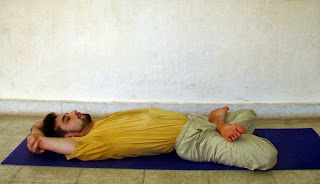We are often conscious of a certain habit pattern that has become a part of our life. We may, for example, be vaguely conscious of our habit of hurrying away with things, or our habit of procrastination, etc. We realize the consequences of some of these wrong habits. We even feebly, wish to change our habits, but unfortunately nothing much comes out of such wishes.
The question that troubles many of us is how to overcome what we have come to regard as a wrong habit. Obviously, the impulse to change a habit has to arise from the same personality structure that has all along nurtured the old habits.
In Yoga, therefore, we talk of the existence of both the Klista (afflictive) and Aklista (non-afflictive) Vritti (thought waves) in a particular state of mind. Nobler aspirations exist in the midst of ignoble traits. We must strengthen the nobler aspirations against the overpowering influence of the ignoble ones. No sooner we detect a desirable tendency growing within us, we should help to strengthen it. One should try to remain very aware of these happenings in our mind.
The inherent understanding about life and its purpose, that we all possess to a larger or smaller degree, is the very foundation for all improvement. With some, of course, the clarity is very poor. With others, there is much greater clarity. Once a good base of clarity or discrimination of the real, from the unreal, is available, one can go about identifying, the desirable tendencies more easily. The right thing for all of us will be, to continuously clarify our minds, about the way we live, and the satisfaction we gain by such living.
Those who do not study this aspect of their lives, or do not evaluate their progress, are very much like the ‘disappointed villager’. This villager, according to the story, went enthusiastically to witness a drama performance. On realizing that he was too early for the performance he preferred to spread his mat and rest for a while. However, in the process, he overslept and was shocked to find that, while he was asleep, the performance had already taken place.
This villager represents all of us, who come to this world to enjoy life and to understand it. Unfortunately we never come to grip with the issue, till the very end of our life – which happens to be the time of our departure.
Source:
From "Stray Thoughts on the Yoga Sutras of Patanjali" by Dr. Jayadeva Yogendra, published by The Yoga Institute of Santacruz, Mumbai - India.
























 Training employees with
Training employees with 


